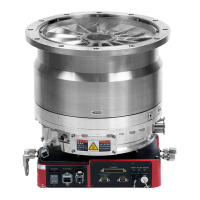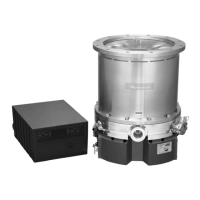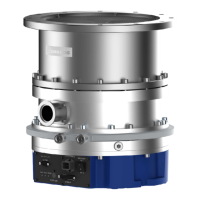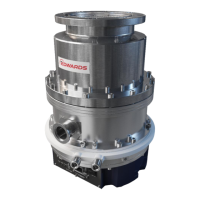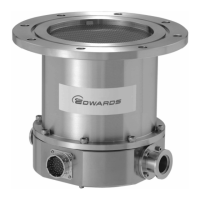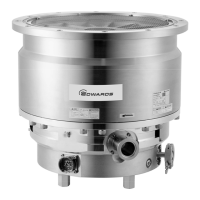STP-iX455/iXL455 Series Instruction Manual
5-6
Installation
5.5 Gas Pumping
◇ When pumping gases, they may remain in the STP pump.
Introduce a purge gas and then exhaust all gasses.
Residual gases in the STP pump may cause an accident when the STP pump is
removed.
Confirm the characteristics of gases to be used, referring to the Material Safety
Data Sheet (MSDS) you obtain from the gas supplier.
◇ Chlorine or fluorine system gases can be used in the corrosion resistant pump
(type C or other models). When you use gases including alkaline metals, but
excluding Li, gases including Ga, Hg, In, or Sn, or HBr, contact Edwards.
◇ NEVER use corrosive gases (chlorine, fluorine, or other system gases) in the
STP pump without anti-corrosion treatment.
◇ DO NOT use any pyrophoric gas.
◇ Cool the STP pump to prevent the STP pump from overheating when pumping
gases. (see Section 5.2, Cooling the STP Pump)
5.5.1 How to Introduce a Purge Gas (For corrosion resistant pump)
◇ When pumping reactive or corrosive gases, introduce a purge gas to protect the
inside of the STP pump. The use of reactive or corrosive gas may result in
product damage.
Connect a needle valve or a similar part to the purge port of the corrosion resistant
pump (type C or other models), and introduce a dry N
2
gas or other gas to perform a gas
purge (see Section 4.3.5, "Connecting the Purge Port (For the corrosion resistant
pump)").
◇ The proper amount of the gas purge is approx. 3.4×10
-2
Pa·m
3
/sec (20 SCCM).
◇ The allowable gas pressure ranges from 1.0×10
5
Pa (atmospheric pressure) to
4.9×10
4
Pa (0.5 kgf/cm
2
) on the introduction side.
◇ When not using the purge port, always mount the blank flange (attached on
delivery).
◇ High-pressure at the inlet port may result in a noise. This is no abnormality/error.

